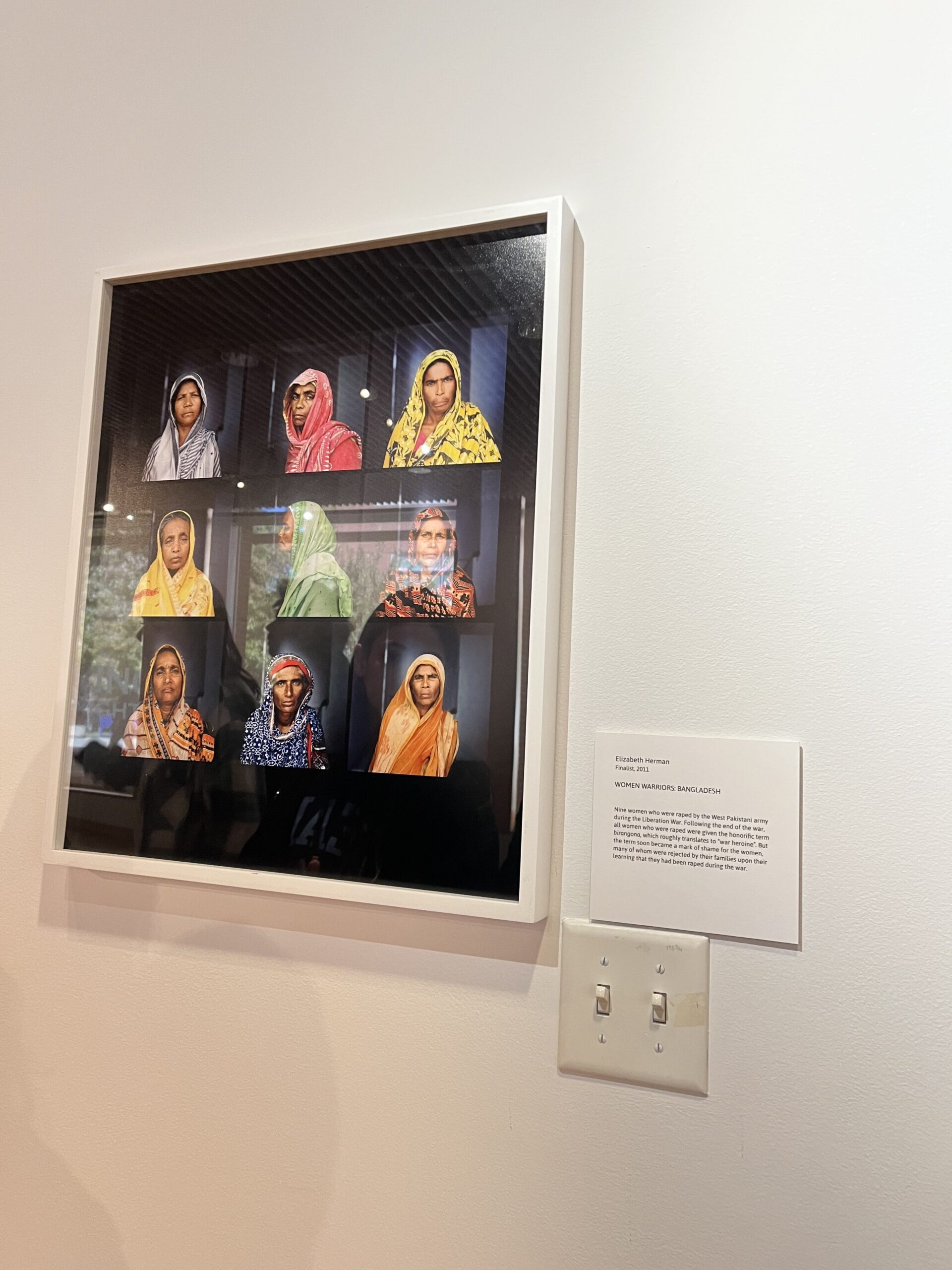By Victoria Cifelli | Published November 19, 2022
The Human Rights Institute Gallery at Kean University is showcasing Aftermath, an exhibit curated by Sara Terry and Teun van der Heijden, to show life after war and the sustainability and human rights issues that accompany it.

The Aftermath Project features images of people in time of loss, resilience, need, and turmoil. The exhibit is scheduled for Oct.10 through to Dec. 7.
Lynette Zimmerman, executive director of galleries at Kean said, “The story does not end. Nothing is shown after the cameras leave, stuff still moves; conflict is everywhere. Humanity transforms, and life goes on.”
One photo at the beginning of the gallery shows nine women who were raped during the Liberation War by members of the West Pakistani army. They were given an honorific term, ‘birangona’, which roughly means ‘war heroine’.
This term later became a shameful term as the women would be turned away by their family members when they learned that they had been raped.
Another photo in the gallery shows a woman dressed in paintball gear, ready for a game in the shooting field. This field was shared by women, men, and children alike.

Paintball games have been used for many occasions and life-turning events; including birthday parties, farewell parties, and school outings. The paintball company had made everyone equal on their field.
An image of an Afghanistan school, located in Herat, holding nearly 13,000 girls who want an education was also on display. The girls were in an underground room and in tents to get an education, despite there being scorpions hiding around.
“These girls want an education, they value learning. These people would do anything to learn,” Zimmerman said.
One photo in this gallery shows protests caused by the 10 rounds of presidential elections in Iran. After Mahmoud Ahmadinejad was declared President of Iran, people used the city of Tehran and other Iranian cities to protest the declaration. There was much suppression from security forces in the country when these protests took place.
“The gallery made me feel like I was being caught up in pieces of history that may have passed me by in my daily life. The gallery as a whole is a very calm environment,” John Defreitas, a junior communication studies major said. “I think it really gives a perspective on what has been going on around the world that we often do not see living in the U.S. One of the main things that stood out to me was anguish and oppression.”

The Human Rights Institute Gallery’s website shares lots of insight behind the photos in the gallery. Behind sustainable development goals, which include gender equality, poverty, peace, and quality education, there are massive effects shown within sustainability with the aftermath of war and living in a warzone.
“I work directly with the director of the galleries here at Kean. We try to focus on topic, medium, and timing of exhibits,” Zimmerman said, “This exhibition is showing moments when people realized the devastation and damage of the war.”
In a photo shown in the gallery, a woman is looking at a photo of a victim killed by the Guatemalan Army. The people of Guatemala honor people who were lost at a former military base in Comalapa.
“It was a photo of a businessman holding the bazooka which to me represents more of how the rich can be enticed by war or destruction while it is the poor that really pay for it,” Defreitas said.

You must be logged in to post a comment.